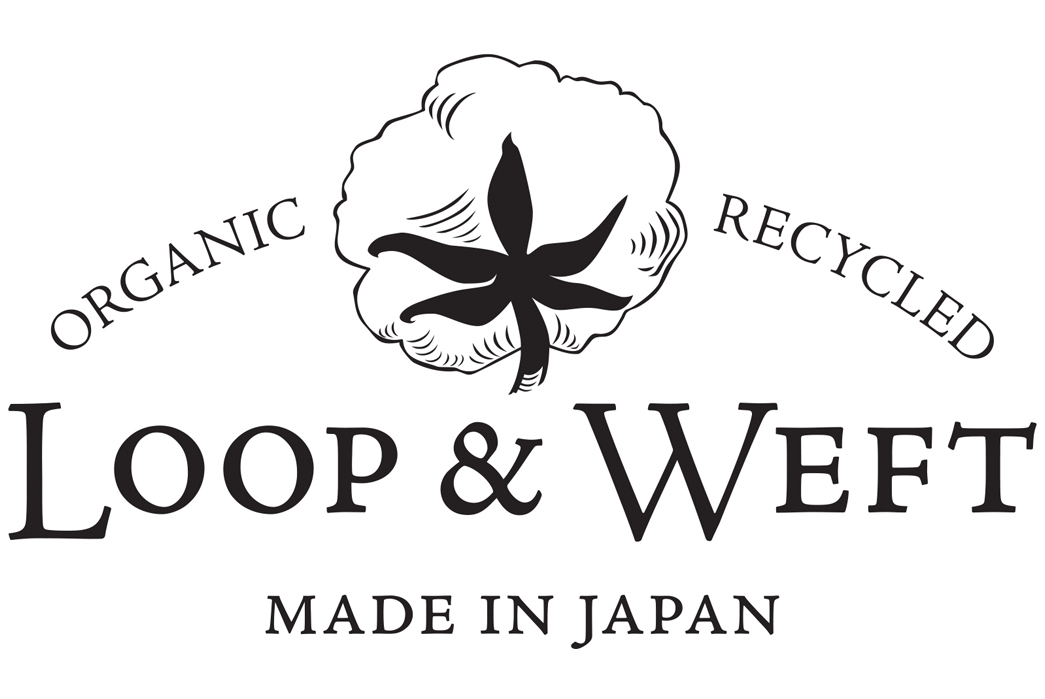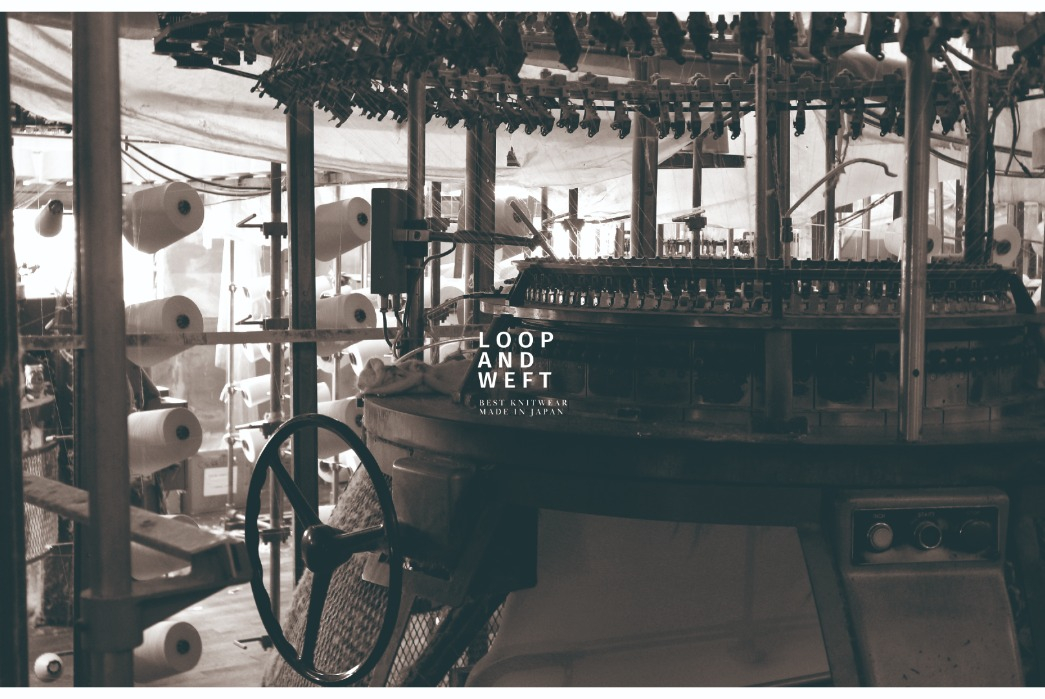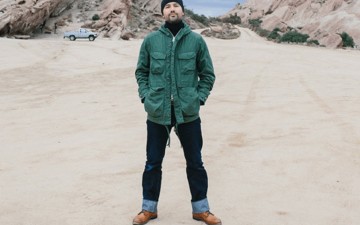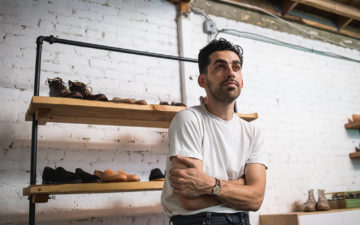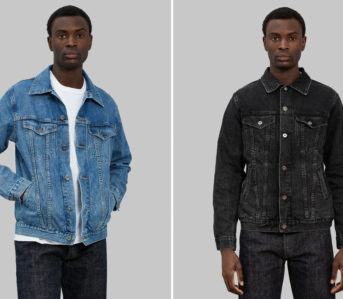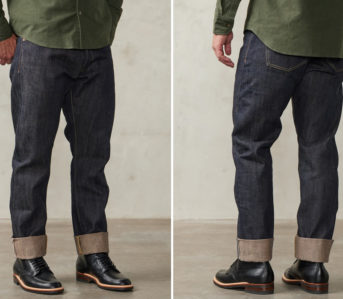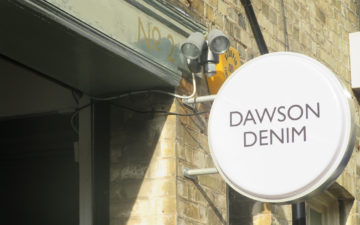Heritage-inspired knitwear is not a rarity anymore – most of us ’round these parts have dived into the sea of sweatshirts out there or taken a dip in loopwheel lake. Don’t get me wrong, folks, this is a great thing, but it makes for a tough market to break into if you’re a brand looking to specialize in the field. It takes a special brand to stand out, a brand like Loop & Weft.
Founded in 2011 by Ryota Seguchi, Loop & Weft is a young brand in the scheme of things, but it’s a young brand that uses a recipe of old knitting machines and old construction techniques to produce a charming line of cotton and wool knitwear. With each piece crafted by Japanese artisans (shukonin), Loop & Weft’s considered garments have certainly added an extra flavor to the heritage scene. But the brand has a point of difference that sets it apart from other makers in the space, and that is its use of the Tompkins knitting machine.
An age-old knitting machine, the Tompkins is an extremely rare piece of kit that produces knitted cotton fleece that is similar-but-different to loopwheeled fabrics. We caught up with Loop & Weft founder Ryota Seguchi to discuss his brand, inspirations, and Loop & Weft’s use of Tompkins knit fabrics.
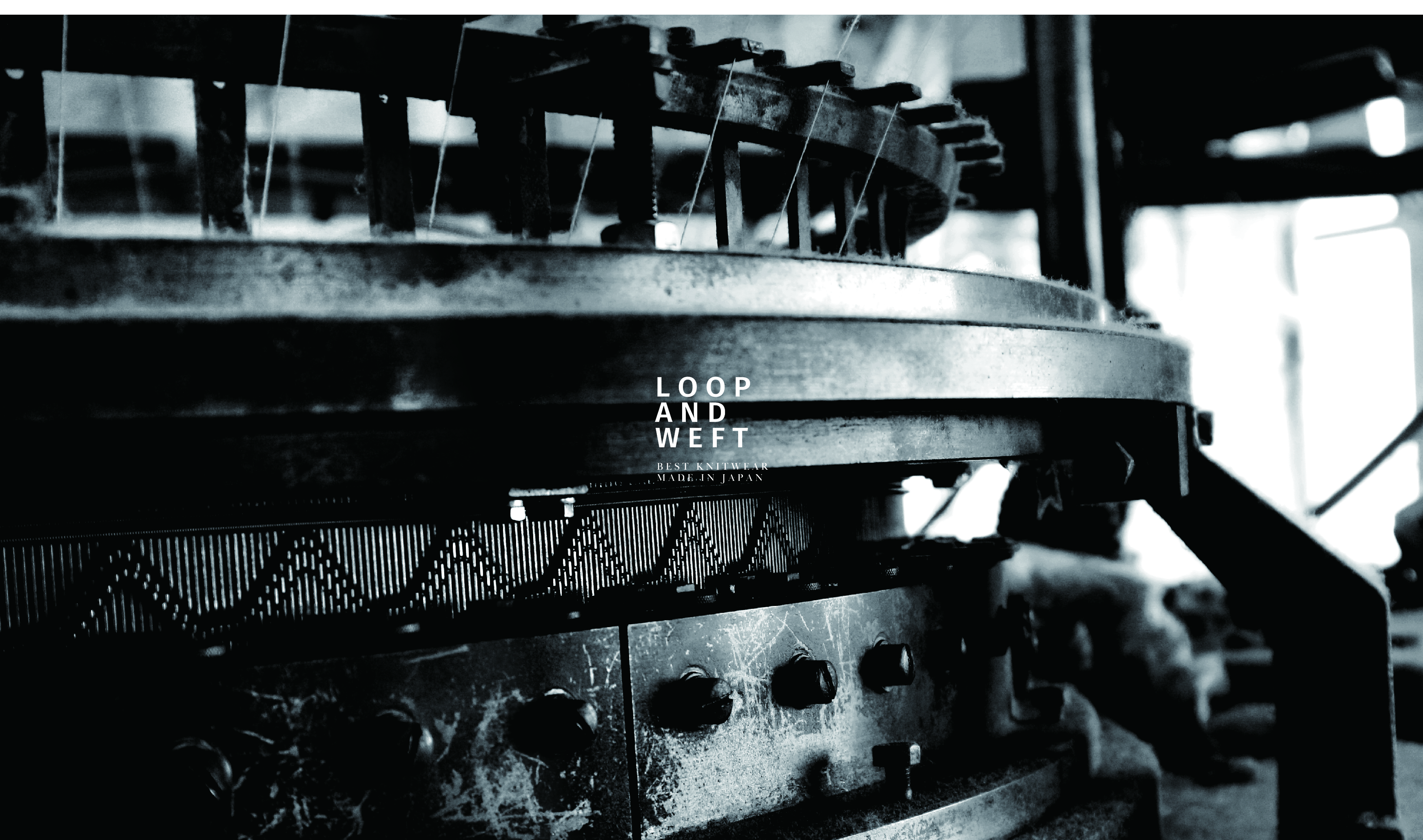
James: Hey, Seguchi San! Thanks for having this chat with us. How are you and how was 2022 for you?
Seguchi San: Hello, thank you very much for this time. 2022 was a really fast year for us. This year, I felt that more overseas people were interested in our products than ever before, so I am very happy.
J: I understand you founded Loop & Weft in 2011. Can you tell me about your journey in the denim and heritage clothing world before then?
S: Before founding Loop & Weft, I worked for a Japanese denim brand. There, I gained experience in a variety of areas, including production management and sales. I am very grateful to the company I worked for because my experience with that brand has been put to good use in my current endeavours.
J: What were your inspirations for founding Loop & Weft?
S: There are several reasons why I founded Loop & Weft. One of them appeared when I was working for a certain denim brand and I went to an overseas store for sales purposes. The store hosted a party for our brand with customers of the store, people involved in the country’s clothing industry, and designers in attendance. People with great influence in the fashion industry passionately told us about the wonders of Japanese products. I was surprised by the greatness of Japanese products, which have had such a great influence on these people, and regretted that I had only a little understanding of the quality and pride of products made in Japan while growing up and living in Japan. I decided that I would someday become independent and that I wanted to create a brand made in Japan that would please many people overseas.
Another reason came through gaining experience in charge of the production management of knitted items. At that time, I was very impressed by the T-shirts produced in a certain factory, and I wanted to learn more about the production technology and production background.
I deepened my connection with those factories and craftsmen through meetings and exchanges and learned many things as we began working closely together. It took a lot of factories, craftsmanship, time, and effort to create a single simple T-shirt. I learned that, behind the scenes, factories and craftsmen in Japan are working very hard to create products, whilst brand presidents and designers receive attention and admiration.
As various brands grow and attract attention, it is of course right for the president and designer to take the lead, work hard, and receive the attention and evaluation of many people. But my interest and curiosity deepened with the craftsmen who just make gorgeous products behind the scenes without anyone paying attention to them. I wanted to establish my own brand so that I could express and convey this.
J: Loop & Weft makes products from both cotton and wool. Are the cotton products made in different locations from the woolen products?
S: They have different origins, yes. In Japan, Wakayama Prefecture is the main production area for cotton fabrics. Woolen textiles are mainly produced in the western part of Aichi Prefecture and part of Gifu Prefecture, which is called “Bishu BISHU”.
In addition to these production areas, there are cases where excellent factories exist in Japan, but I don’t think there are many left at present.
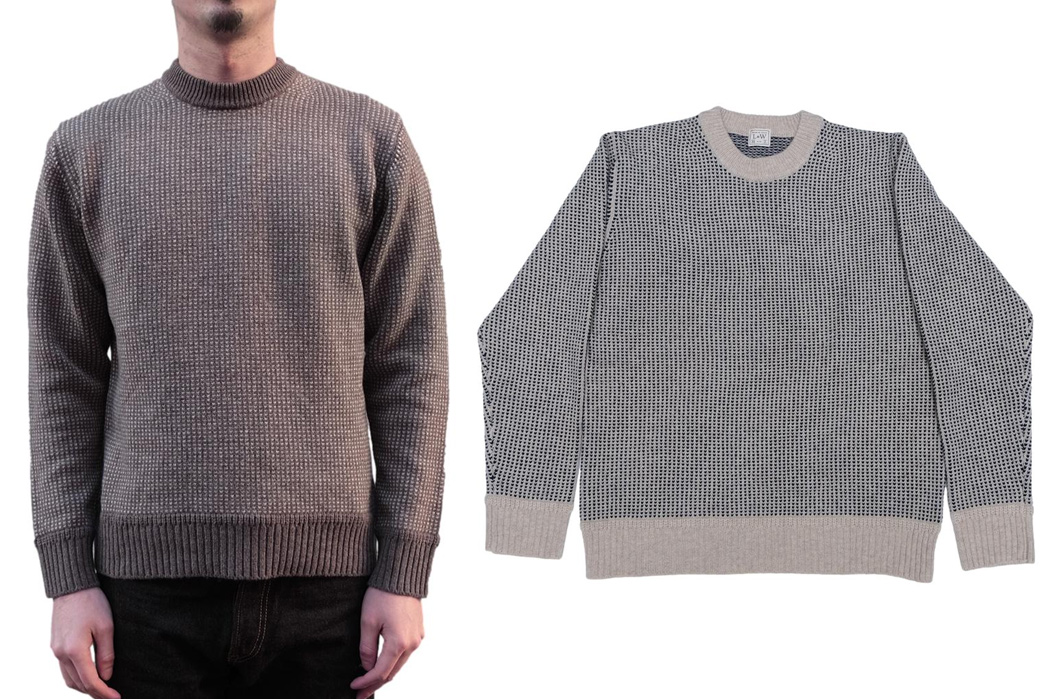
Loop & Weft Merino Lambswool Classic Birdseye Sweater, available for $280 from Okayama Denim.
J: Before founding Loop & Weft, had you already created relationships with shokunin and knitting mills whilst working in the clothing industry? Or was this something you had to pursue?
S: I built some relationships with craftsmen and factories when I was in charge of production control in the knitwear department in my previous job. But when I wanted to make wool sweaters for Loop & Weft, I searched for factories in Japan by myself. We are still building a relationship with the current wool factory.
I just wanted to make knitted products that impressed me and share them with many people, and this naturally led me to pursue knitting products.
J: In a market dominated by loopwheel knitting, you opt to make use of the Tompkins Knitting machine to produce many of your garments. Can you tell us about the Tompkins Knitting Machine and how you discovered it?
S: When I was looking for various fabric samples at the factory in Wakayama, I came across a small piece of fabric cut to about 10 cm. It was a very soft and tactile fabric with ‘Tompkin’ written in small letters. And I checked with the factory if this fabric is really Tompkin knitted fabric.
The factory told me “This is a fabric sample knitted with Tompkin, a truly fantastic knitting machine”. I was surprised that Tompkins machines still existed, and immediately asked for a sample fabric to be made using this Tompkin knitting machine. The moment the sample was completed and I touched the fabric, I was greatly impressed by the unprecedented softness and plumpness of the material. I want to show people the splendor and rarity of this fabric, so I have been making various products with it.
The Tompkin is an old-fashioned knitting machine that predates loopwheel knitting. One difference from the normal knitting machines is that the normal knitting machine knits the fabric from top to bottom, but Tompkin is a very interesting knitting machine that knits from bottom to top. I think this is a unique feature of the Tompkin knitting machine. Like loopwheel knitting, the fabric is knitted at a slow speed, so the productivity is very low and it is not possible to produce large quantities. Modern knitting machines can knit overwhelmingly more fabrics, so many factories are abandoning loopwheel machines and Tompkin knitting machines and replacing them with modern knitting machines that can produce more fabric.
Indeed, the loopwheel machine is a very valuable knitting machine and can knit wonderful fabrics. But in reality, there are over 400 loopwheel machines in operation in Wakayama, so it’s easy to obtain loopwheel products from many brands. I wanted to do something different. Rather than that, it was speculated that only one Tompkin knitting machine was in operation at the small factory that we had requested, so I wanted to show the wonderfulness of this Tompkin fabric to those who could understand and appreciate it.
One reason why this Tompkin knitting machine in Japan has not become famous until now is that the small factory that owned the Tompkin knitting machine refused all media and magazine coverage. The factories owning the loopwheel machines have appeared in various magazines and media a lot, so many customers know about loopwheeled fabrics. Most people are unaware of the rarity of the Tompkins knitting machine.
Unfortunately, one of the only Japanese craftsmen to operate the Tompkins knitting machine retired this year, so he can no longer make Tompkins knit products, making them even more illusive.
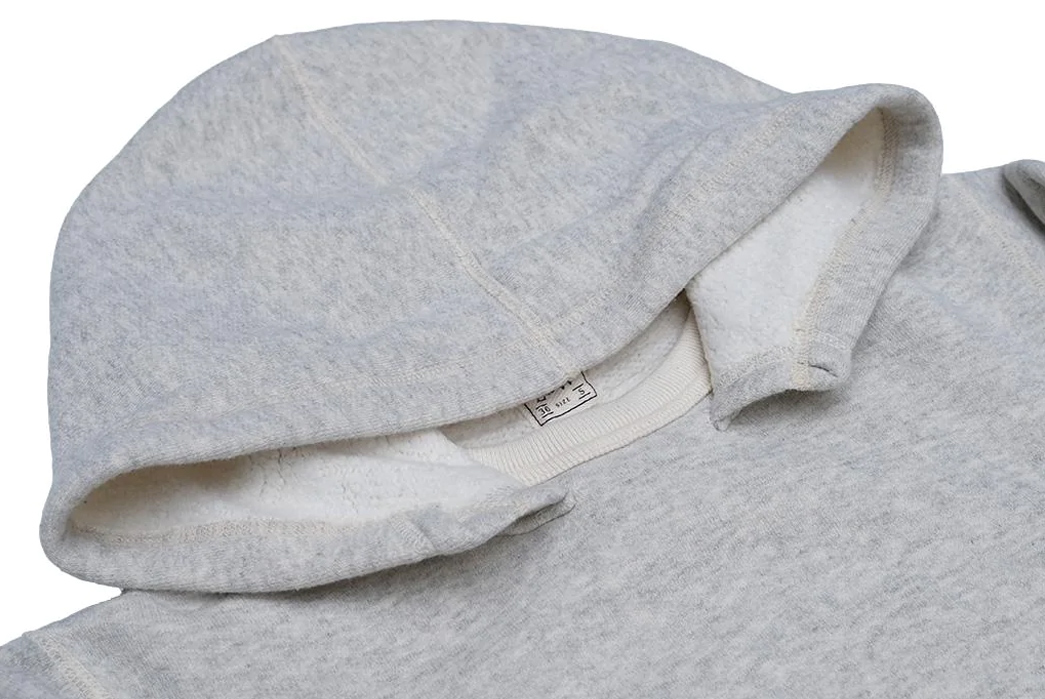
Loop & Weft Tompkins Knit After Hood Sweatshirt, $198 from Okayama Denim.
J: How do Tompkins Knit fabrics differ from Loopwheel knit? What should our readers know about Tompkins knit fabrics?
S: Factors other than the knitting machine, such as the raw material, the type of yarn, the count, and the processing method, may vary greatly, so it is not possible to give a general answer. But, as mentioned above, the major structural feature of the machine is that Tompkins weaves slowly from bottom to top. One general difference between the fabrics is that Tompkins can be more plump, thick, and soft in texture.
Old knitting machines can increase the density of the fabric, so they are good at making firm and stiff fabrics. Tompkins fabrics are high-density but have a soft stretch that adapts to the shape of the body without stress. It is warm and comfortable to wear, and the surface has a vintage look. Only by actually touching and wearing it, you can enjoy its unique softness and exquisite texture that is different from other fabrics.
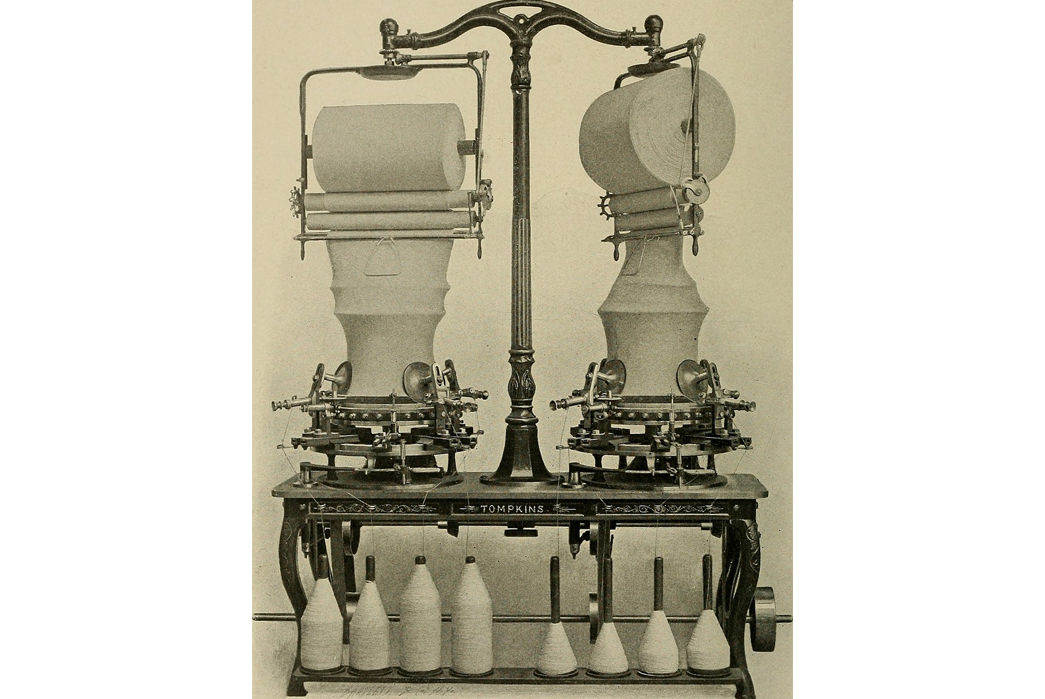
A Tompkins Knitting Machine, via Wikimedia Commons
J: When designing new silhouettes for the Loop & Weft garments, where do you look for inspiration?
S: I find inspiration in many different ways when coming up with new ideas. I always look for it in various situations, but sometimes I come up with it while looking for and reading old books, collecting fabric samples, visiting various clothing stores, visiting factories, and talking with craftsmen.
The moments when I come up with an interesting idea seem to happen more by chance rather than spending hours and days of brooding over it. One is if you are inspired by a rare t-shirt or undershirt you find in a second-hand store that you pass by aimlessly. Sometimes it’s in casual conversations with craftsmen. One thing that can be said is that various designers and planners are constantly thinking about how to use their time to get ideas. I think it’s a constant struggle!
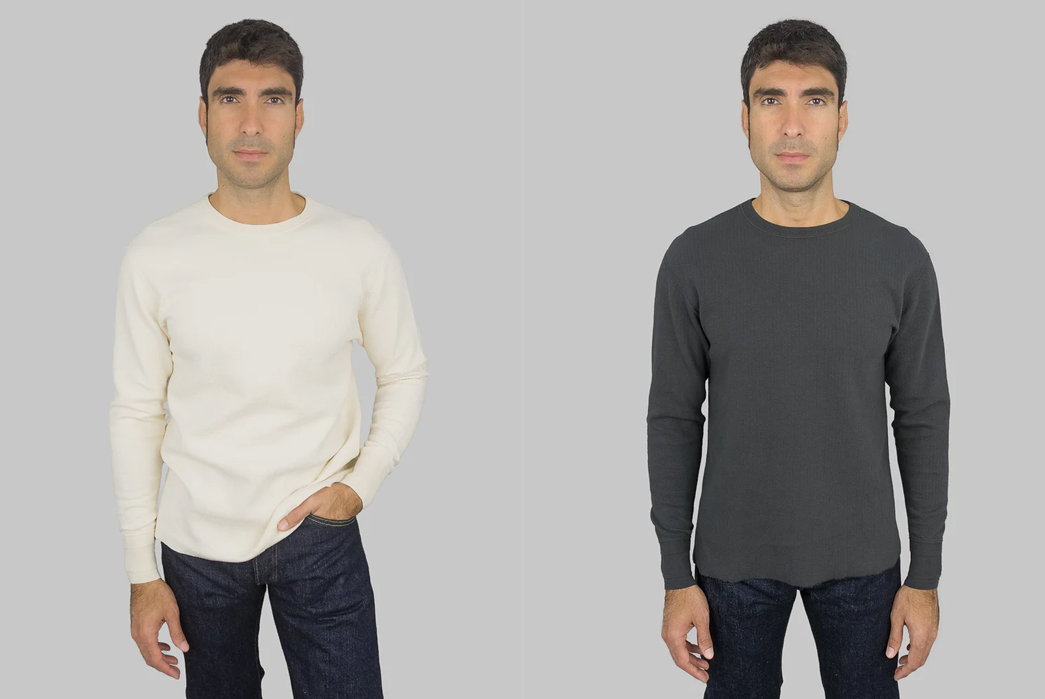
Loop & Weft Double Face Jacquard Crewneck Thermal, $144 from Redcast Heritage.
J: Thanks again for taking the time to talk with us. We really appreciate it!
S: Thank you very much for organizing this time. Our products may look simple at first glance, but they are all products that require the skills of many factories and craftsmen and are made over a long period of time. Japan has a history of making various products with great care since ancient times. We have such a deep love for our products that we take our time to make them. I would be really happy if people all over the world could wear these products with pleasure.
